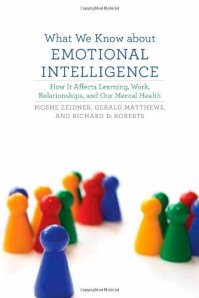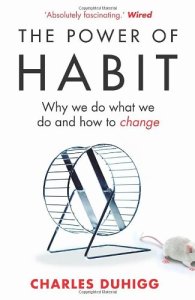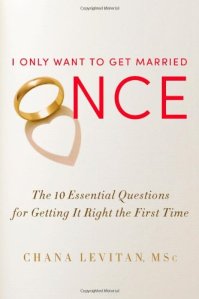ARE THERE INDIVIDUAL LEARNING STYLES? Students are adamant they learn best visually or by hearing a lesson or by reading, and so forth. And while some educators advocate teaching methods that take advantage of differences in the way students learn, some psychologists take issue with the idea that learning style makes any significant difference in the classroom.Image: Alexander Iwan/Flickr
Ken Gibson was an advanced reader in elementary school and easily retained much of what he read. But when the teacher would stand him up in front of the class to read a report out loud, he floundered. His classmates, he noticed, also had their inconsistencies. Some relished oral presentations but took forever to read a passage on their own; others had a hard time following lectures. Gibson now explains these discrepancies as “learning styles” that differ from one student to the next. He founded a company, LearningRx, on the premise that these styles make a difference in how students learn.
The idea that learning styles vary among students has taken off in recent years. Many teachers, parents and students are adamant that they learn best visually or by hearing a lesson or by reading, and so forth. And some educators have advocated teaching methods that take advantage of differences in the way students learn. But some psychologists take issue with the idea that learning style makes any significant difference in the classroom.
There is no shortage of ideas in the professional literature. David Kolb of Case Western Reserve University posits that personality divides learners into categories based on how actively or observationally they learn and whether they thrive on abstract concepts or concrete ones. Another conjecture holds that sequential learners understand information best when it is presented one step at a time whereas holistic learners benefit more from seeing the big picture. Psychologists have published at least 71 different hypotheseson learning styles.
Frank Coffield, professor of education at the University of London, set out to find commonalities among the many disparate ideas about learning style using a sample comprising 13 models. The findings, published in 2004, found that only three tests for learning styles met their criteria for both validity and reliability, meaning that the tests both measured what they intended to measure and yielded consistent results. Among the many competing ideas, Coffield and his colleagues found no sign pointing to an overarching model of learning styles.
In 2002 Gibson, after a brief career as a pediatric optometrist, started LearningRx, a nontraditional tutoring organization, based on the idea that different people rely on particular cognitive skills that are strongest. For instance, visual learners understand lessons best when they are presented via images or a slide show; auditory learners benefit more from lectures; kinesthetic learners prefer something concrete, such as building a diorama. “We have a natural tendency to use the skills that are strongest,” Gibson says. “That becomes our learning style.”
LearningRx trainers use cognitive skill assessments similar to IQ tests to identify a student’s areas of cognitive strengths and weaknesses—some people might be strong at memorizing written words or weak at doing mathematical computations in their heads. Then they administer “brain training” exercises designed to improve students’ weakest skills. Such exercises might involve a trainer asking a student to quickly answer a series of math problems in his head.
Daniel Willingham, a professor of cognitive psychology at the University of Virginia and outspoken skeptic of learning styles, argues that Gibson and other cognitive psychologists are mistaken to equate cognitive strengths with learning styles. The two, Willingham says, are different: Whereas cognitive ability clearly affects the ability to learn, an individual’s style doesn’t. “You can have two basketball players, for example, with a different style. One is very conservative whereas the other is a real risk-taker and likes to take crazy shots and so forth, but they might be equivalent in ability.”
As Willingham points out, the idea that ability affects performance in the classroom is not particularly surprising. The more interesting question is whether learning styles, as opposed to abilities, make a difference in the classroom. Would educators be more effective if they identified their students’ individual styles and catered their lessons to them?
The premise should be testable, Willingham says. “The prediction is really straightforward: If you appeal to a person’s style versus going against his preferred style, that should make a difference for learning outcomes,” he says.
Harold Pashler of the University of California, San Diego, and his colleagues searched the research literature for exactly this kind of empirical evidence. They couldn’t find any. One study they reviewed compared participants’ scores on the Verbalizer–Visualizer Questionnaire, a fifteen-item survey of true-or-false questions evaluating whether someone prefers auditory or optical information, with their scores on memory tests after presenting words via either pictures or verbal reading. On average, participants performed better on the free-recall test when they were shown images, regardless of their preferences.
Some studies claimed to have demonstrated the effectiveness of teaching to learning styles, although they had small sample sizes, selectively reported data or were methodologically flawed. Those that were methodologically sound found no relationship between learning styles and performance on assessments. Willingham and Pashler believe that learning styles is a myth perpetuated merely by sloppy research and confirmation bias.
Despite the lack of empirical evidence for learning styles, Gibson continues to think of ability and preference as being one and the same. Trainers at LearningRx ask their clients to describe their weaknesses, then measure their cognitive abilities using theWoodcock–Johnson Test. “Just by someone telling us what’s easy and hard for them, we can pretty well know where the deficiencies are,” he says. “Eighty-five to 90 percent of the time the symptoms and the test results are right on.”
When teachers wonder how to present a lesson to kids with a range of abilities, they may not find the answer in established learning style approaches. Instead, Willingham suggests keeping it simple. “It’s the material, not the differences among the students, that ought to be the determinant of how the teacher is going to present a lesson,” he says. For example, if the goal is to teach students the geography of South America, the most effective way to do so across the board would be by looking at a map instead of verbally describing the shape and relative location of each country. “If there’s one terrific way that captures a concept for almost everybody, then you’re done.”






















